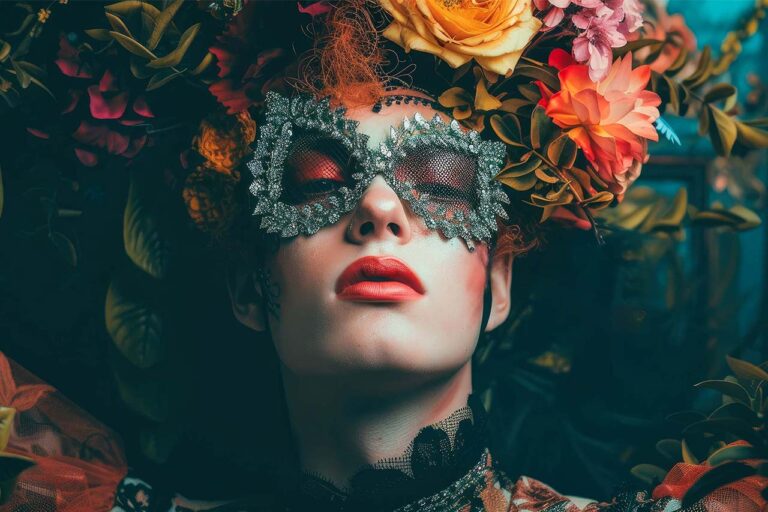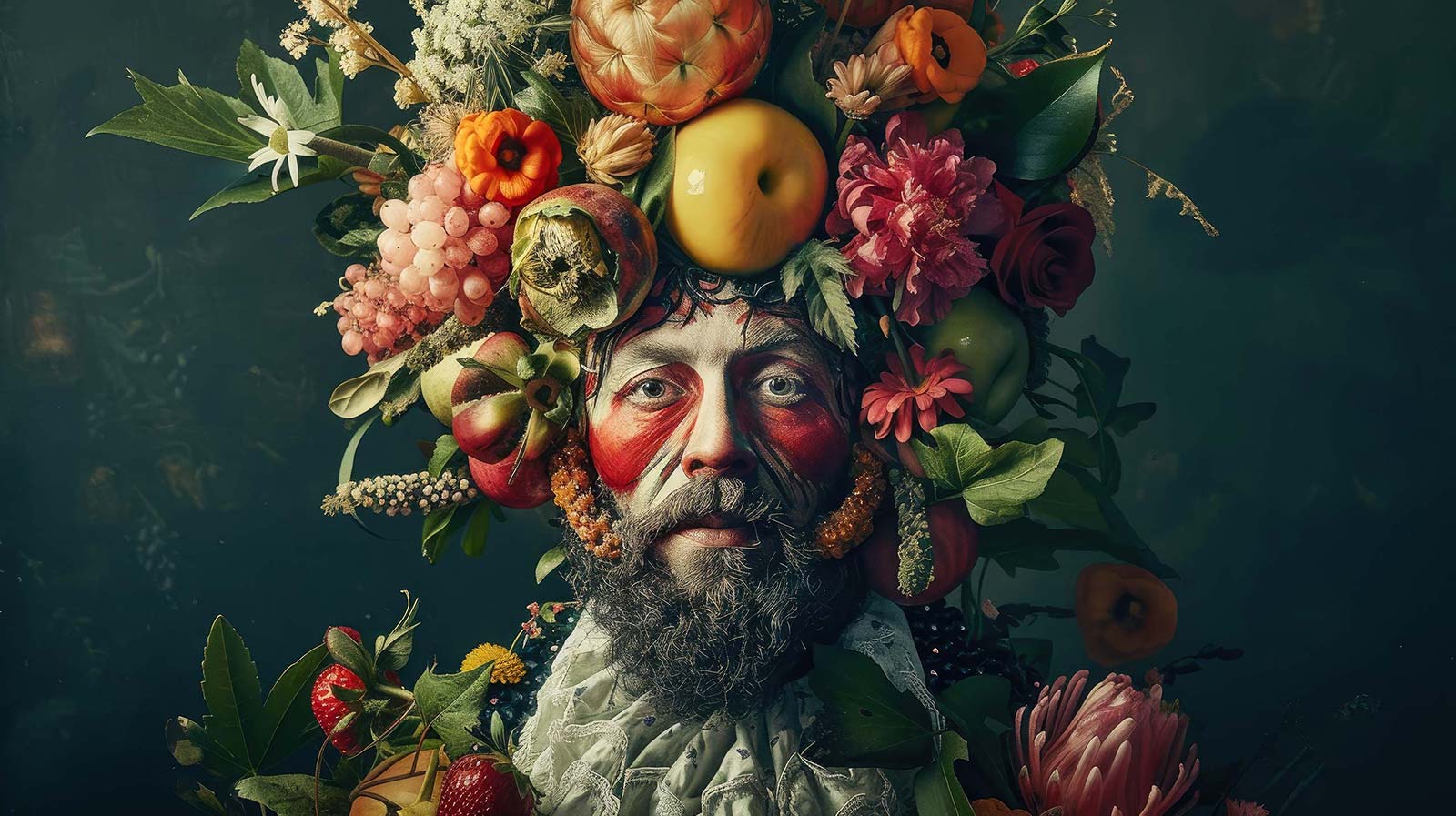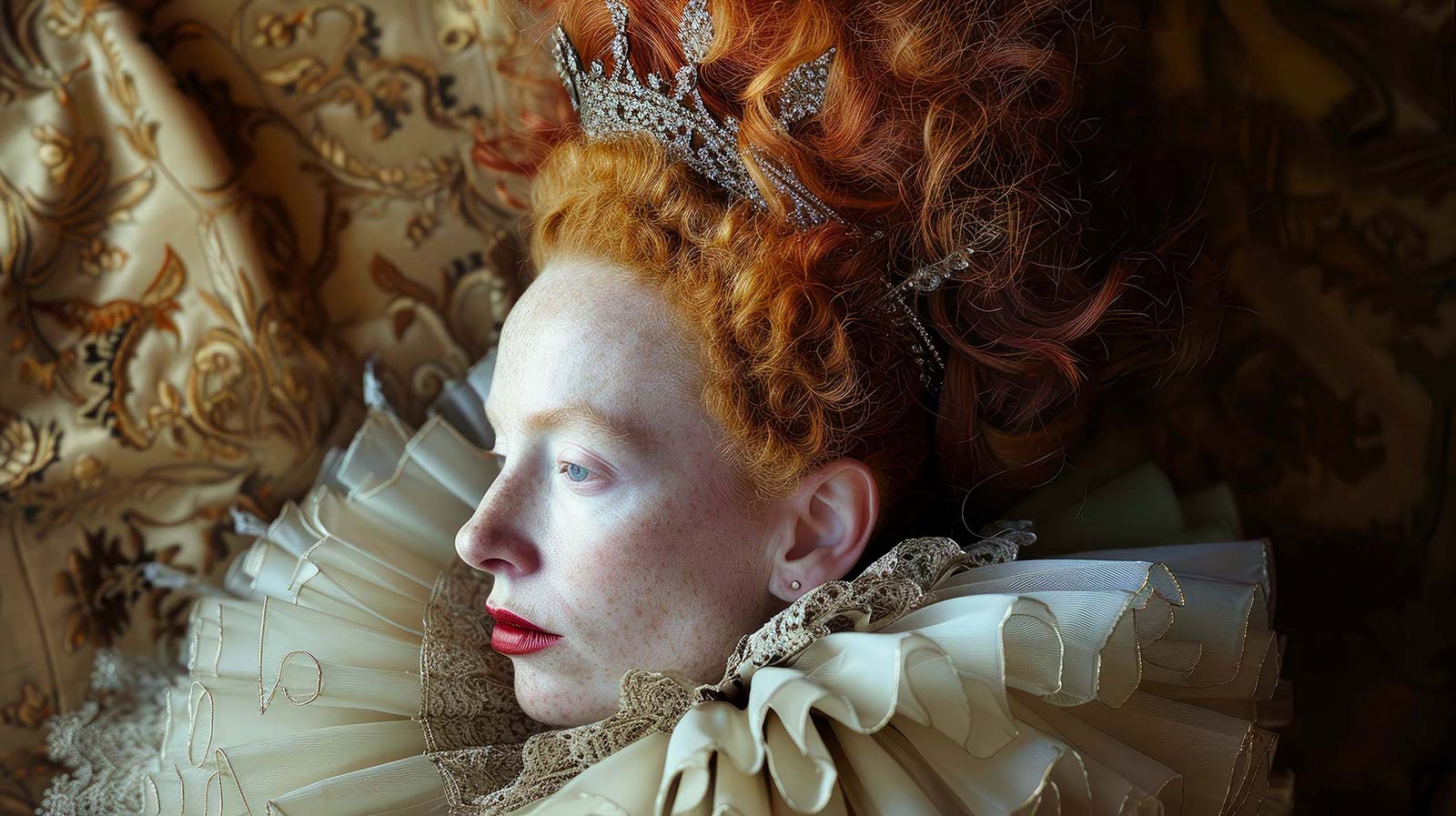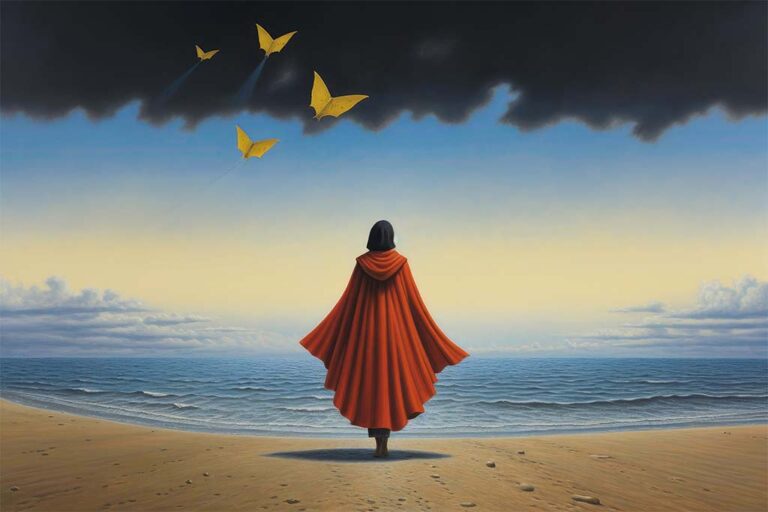
Info
- Digital artwork by Olio Imaginarium
- A series of 54 digital artworks
- Year: 2024
Artwork In brief
In the silent afterglow of the hipster’s heyday, let us embark on a journey through the epochs, unveiling the DNA of Hipsters. Stylemakers that defy mainstream norms have always existed. From the stoic-chic philosophers of ancient Rome, who honed their rhetoric in bath lounges beneath the marble columns, to the Baroque vogue-masters pushing the boundaries of grandeur, and onto the 19th-century dandies, whose boulevard promenades were a showcase of tailored finesse and artfully sculpted moustaches—each era had its own champions of chic. The hipster spirit, it turns out, was never a trend but a timeless phenomenon. The desire to stand out from the crowd and explore alternative lifestyles is woven into the very fabric of our history.

In ancient Rome, the philosopher connoisseurs gathered, draped in their organically sourced, locally woven togas. Engaged in fervent debates over the merits of Stoicism versus Epicureanism, they all the while decried the Colosseum’s gladiator battles as overly populist. ”Indeed, the real spectacle lies not in the arena’s brawls, but in the clandestine thrill of midnight chariot rallies,” one might say, tipping a cup of exotic spiced wine in salute to their compatriots.

As the echoes of debate faded from the Roman forums, a new kind of influencer emerged, so effortlessly cool that he turned water into artisanal wine without breaking a sweat under the desert sun. Meet Hipster Jesus, the original long-haired rebel, whose charismatic sermons on mountaintops went viral without the need of high speed internet. Clad in simple yet timeless robes, he eschewed mainstream temples, preferring to spread his message in the open air, accompanied by an entourage of twelve equally nonconformist fellows. His parables were the stuff of legends, spinning tales that would resonate through millennia, and gathering a following that would put any modern-day celebrity to shame.

The spirit of subtle rebellion carried into the medieval era where the medieval minstrels would roam from town to town, lutes in hand, lamenting the populism of the latest Gregorian chant. “It’s all about the B-sides of these parchment scrolls,” they’d argue, strumming a tune that wouldn’t hit the mainstream for another century.

While the Church seemed to wield ultimate power, on the fringes, a sect of bohemian clerics carved out their own peculiar paths. These free spirits of the cloister wove alternative lore into their sermons, their words resonating like indie anthems heralding the early whispers of social justice. And let’s not overlook the audacious, liberated nuns who cast daring glances from beneath their veils.

Medieval times were not all gloom and doom. At carnivals, societal norms were flipped on their heads in a wild riot of color and cacophony. Sharp-tongued jesters critiqued the status quo, ridiculing rulers and celebrating the quirky, the overlooked, and the offbeat. In a world of rigid hierarchies, these merry masqueraders embraced the chaos, their laughter echoing through the streets.

Meanwhile, in their shadowy workshops, a few eccentric alchemists pursued their craft with a hip twist. While others pursued the noble quest of turning lead into gold, these laid back chemists were busy brewing elixirs for more unconventional purposes – perhaps an early version of kombucha or a tasty tincture to charm away the chills.

On we march to the late Renaissance and the court of Elizabeth I. She played the game of thrones with a deck full of wild cards, her single status a strategic stroke in a world where marriage was politics by another name. Perhaps the Virgin Queen was the original architect of the ’relationship status: it’s complicated.’ Whispers of romances swirled like the petticoats at her balls, yet she remained the inscrutable enigma, an icon of independence, who set herself apart from other monarchs prizing alliance over autonomy.

In the gallery below, you’ll find many more untold stories, like that of Cleopatra with her heart-stopping gaze, a hip Julius Caesar proclaiming ’Veni, Vidi, Vici’ over the hearts of the fashion-forward, a flower-power Viking, and a certain outlaw of Sherwood Forest, redistributing wealth with impeccable rhetoric and unmatched style. And now, my dear reader, as the prelude draws to its close, the symphony of style prepares to crescendo. Turn the page to ’Hipster Odyssey II: Chronicles of the Chic,’ and immerse yourself in the Baroque and beyond, where nobles strutted like peacocks and every soirée was a kaleidoscope of costumes.



